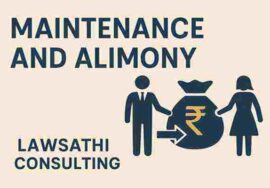Divorce Process in the USA
Divorce law in the United States varies by state, as family law is primarily governed at the state level. Here’s a general overview: Divorce process in the USA
Types of Divorce
No-Fault Divorce: Most states allow couples to divorce without assigning blame, citing irreconcilable differences or the marriage being irretrievably broken.
Fault-Based Divorce: In some states, a spouse may file for divorce based on specific grounds such as adultery, cruelty, abandonment, or substance abuse.
Divorce Process
Filing a Petition: One spouse (the petitioner) files a divorce complaint or petition in the appropriate court.
Serving Papers: The other spouse (the respondent) is formally served with the divorce papers.
Response: The respondent may agree (uncontested) or dispute (contested) the divorce terms.
Discovery: Both parties exchange information about finances, assets, and other relevant matters.
Settlement or Trial: The divorce is resolved either through mutual agreement or a court trial.
Key Issues in Divorce
Division of Assets and Debts:
Community Property States: Assets and debts acquired during the marriage are typically split 50/50.
Equitable Distribution States: Assets are divided in a manner deemed fair, which may not always mean equal.
Spousal Support (Alimony): Determined based on factors such as the length of the marriage, earning capacities, and the standard of living during the marriage.
Child Custody and Support:
Custody decisions prioritize the child’s best interests.
Child support is calculated using state-specific guidelines based on parental income and needs.
Prenuptial/Postnuptial Agreements:
Agreements made before or during the marriage can influence asset division and other matters.
State Variations
Residency Requirements: Most states require at least one spouse to live in the state for a certain period before filing.
Waiting Periods: Some states impose a mandatory waiting period before the divorce is finalized.
Mediation and Counseling: Some states require mediation or counseling efforts before granting a divorce.
Uncontested vs. Contested Divorce
Uncontested Divorce: Both parties agree on all terms, typically faster and less expensive.
Contested Divorce: Disagreements on major issues, often requiring court intervention and potentially lengthy trials.
This is a general overview and things can differ as per case and circumstances. For better understanding contact your legal advisor/attorney. Divorce Process in the USA.
If you want to file a divorce in India and you want to know about the divorce process in India.
Disclaimer: This article is for educational and informational purposes only. It provides a general understanding of legal remedies but does not constitute legal advice. For specific legal guidance, you can just consult the legal matter expert.







